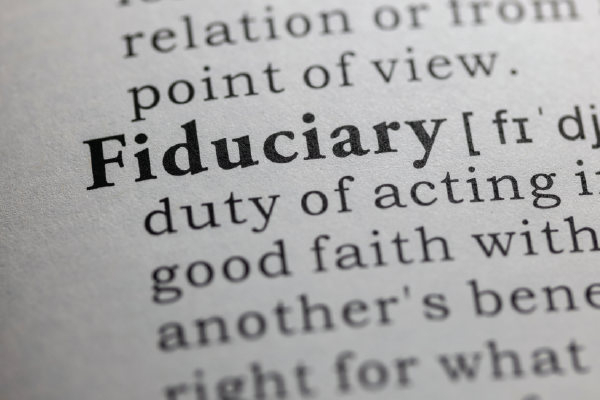401(k) Fee Transparency: What Is the True Cost of Your Retirement Plan?
Learn how to protect your plan’s participants from hidden fees
Every employer retirement plan has fees, but costs can vary significantly between plans and providers. As an employer, your fiduciary responsibilities include knowing the fees in your plan and ensuring that the fees are reasonable for the services you are receiving.
Employees have filed countless lawsuits against their employers over the last decade, claiming that retirement plan sponsors failed in their duties to offer prudent investment options with reasonable fees.
To manage your risk as a plan sponsor, identifying and eliminating hidden fees is crucial.
What Are the Basic Types of Retirement Plan Fees?
There are several role-based fees in 401(k) and other retirement plans. Here are the providers you’re likely paying to service your plan:
Recordkeeper
The recordkeeper is responsible for tracking who is in the retirement plan, the investments they own, and the money that’s going into or out of the plan.
Third-Party Administrator
The third-party administrator maintains the plan’s regulatory compliance, including overseeing processes to ensure that the plan is adhering to the provisions contained within its plan document.
The administrator can be associated with the recordkeeper (referred to as a “bundled” arrangement) or can be independent of the recordkeeper (referred to as an “unbundled” arrangement through a third-party administrator or TPA).
Custody of the Assets
The custodian is the entity entrusted with holding the retirement plan’s assets. As a fiduciary, the custodian is responsible for ensuring that the plan’s assets are invested as the plan’s participants have designated.
Investment Advisor or Manager
The investment advisor helps to develop the retirement plan, provides advice on the investment options in the plan, and helps select additional parties, like a recordkeeper, custodian, or TPA.
Why Are Plan Fees So Complex?
Most plans have multiple providers who service the plan, so figuring out the fees can be confusing. Providers can be paid directly or indirectly and sometimes through a combination of both, which can make plan fees even more complicated.
As a fiduciary to the plan, you need to gain an understanding of your retirement plan’s providers and how their fees are structured.
How Are Retirement Plan Fees Structured?
Companies can pay retirement plan fees directly, or the fees can be deducted from participants’ accounts (the plan assets).
Too often we will hear plan sponsors say something like, “I am not paying anything for the service providers in my plan.” The truth is, if the provider is not upfront about the cost, they’re almost certainly paid behind the scenes. This means the fees are wrapped up in the investment or fund expense, and the fees are paid by the investment options. This lack of transparency has been grounds for many lawsuits.
Retirement plan fees are structured in several different ways. A few common techniques include:
- Percentage of assets
- Flat fee
- Fee per participant
- Percentage of fund/investment expense
- Fee wrapped into another fee (e.g., payroll)
- Revenue sharing from the fund companies
- Revenue sharing from the recordkeeper or TPA
- Finders’ fees
- A combination of two or more of the above
Don’t assume your advisor and other plan providers are only paid by you. Frequently, that’s not the case.
If you’re paying your providers with a combination of two or more of the above fee structures, your providers could be receiving indirect compensation and you could be facing conflicts of interest within your plan.
Beware of Indirect Compensation and Conflicts of Interest
Many retirement plan sponsors don’t realize that the fees they’re paying aren’t necessarily the only compensation providers are getting.
Plan providers often receive compensation from the other service providers, mutual fund families, or financial partners, usually in the form of wrap fees or revenue sharing. Many sponsors think that their plan is free when, in reality, the fees are hidden as money flows from an investment provider to the advisor.
Some providers may subcontract their work, opening the possibility that the fee you’ve paid to the provider is then shared with the contractor, and likely costs more than a direct fee to a provider who doesn’t subcontract.
These “hidden” fees typically result in higher investment costs and higher overall plan costs, which reduce the amount of money you and your employees have for retirement.
How to Avoid Unnecessary Fees in Your Retirement Plan
Not all plan fees are avoidable, but you can limit your risk of overpaying for your plan.
Review Your Plan
It starts with knowing who you are paying and how. We recommend looking at your plan twice a year with the goal of determining if the administration and investment fees are appropriate for the services provided.
Review each of your service provider’s qualifications, quality of service, and total fees paid. You should require them to provide the level of detail and transparency you need to make informed decisions.
With greater transparency, you will be able to determine direct and indirect fees to calculate the total cost of your plan.
Eliminate Indirect Payments and Conflicts of Interest
In addition, you should look for and eliminate conflicts of interest and revenue sharing from your plan. These can drive up the possibility of hidden fees and place an unnecessary financial burden on your plan participants—for which you could be held liable.
Disclose Any Fees to Participants
Be transparent with your participants about all fees. Communication and trust are essential in achieving your participation goals and overall satisfaction with the plan. Go above and beyond providing the necessary ERISA Section 404(c) documentation, and inform participants about the fees you’ve negotiated on their behalf.
Assess Your Advisor
Finally, evaluate your advisor to ensure that you are benefiting from conflict-free advice. (Hint: many plan sponsors are not.)
Most people who examine the retirement plan industry for the first time are surprised by the lack of transparency in compensation. Understanding plan fees is extremely difficult, and having the right advisor sitting on your side of the table can make the difference between complying or not complying with the rules—and of course, not complying could mean real liability.
You should ask your retirement plan advisor to provide a complete list of fees—direct and indirect. Ask if any fees paid to investment funds are paid back to the advisor. Many plan sponsors are shocked when they discover that their fees are up to 40 percent higher than what their peers are paying and that their advisor is benefiting from the overage.
It’s in your best interest to hire a contractually named Fiduciary Investment Manager who is required to make decisions solely in the best interest of your plan and its participants to help eliminate unnecessary fees and conflicts of interest.




